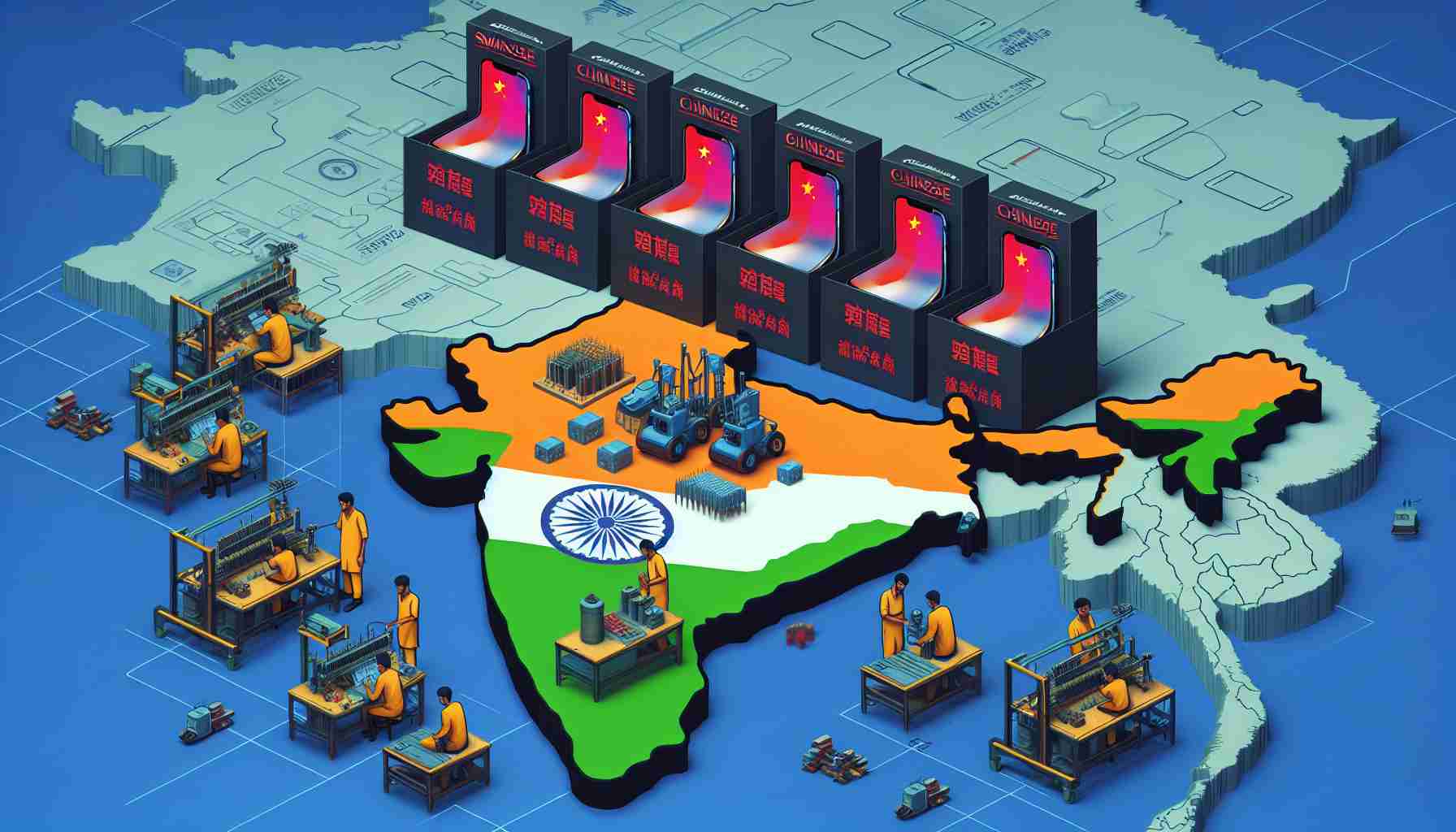Indian efforts to bolster domestic smartphone production face challenges, as local companies struggle to weaken the foothold of Chinese brands in the market. The latest data reveals that Chinese smartphone market share in India has marginally increased to 75% since 2019, showing resilience against India’s proactive policies to nurture its own production capabilities.
Under the Production Linked Incentive (PLI) scheme, India has been offering financial rewards to stimulate national smartphone manufacturing. The scheme is a deliberate move to empower local enterprises and spawn job opportunities by decreasing the dependence on overseas imports, particularly from China. Notable Chinese players such as OnePlus and Vivo are tactically excluded from the benefits of this scheme.
Despite these efforts, the influence of Chinese manufacturers like Transsion remains strong. Transsion, with its budget-friendly yet advanced smartphones under the Tecno, Itel, and Infinix brands, continues to appeal to the budget-conscious Indian consumer base.
Even global giants such as Apple have ramped up production within India, although the firm’s market share remains relatively stable since 2019. For Indian smartphone manufacturers, the battle is uphill. Faced with a necessity to rise above stiff competition, they also grapple with a dearth of significant investment in research and development as well as the creation of intellectual property.
The PLI initiative’s core goal is twofold: to cut down on Chinese imports by encouraging national production and to also propagate job growth within the country. However, domestic players are yet to match up to the Chinese brands, who excel in mixing cost-efficiency with solid marketing strategies.
Though Indian brands are backed by governmental incentives, their insufficient research and development and intellectual property generation hinder their progress against deeply entrenched foreign brands.
To gain a deeper understanding of the PLI scheme and current market dynamics, one may explore resources such as Counterpoint Research, the Make in India government initiative, and GSMArena for smartphone specifications and reviews accessible in India. Despite the establishment of the PLI scheme, Chinese smartphones command a significant majority of the Indian market, as domestic manufacturers continue to face substantial barriers including competitive dynamics and the scarcity of innovation and intellectual property creation.
Key Questions and Answers:
– What challenges are Indian smartphone companies facing in competing with Chinese brands?
Indian companies struggle with inadequate investment in research and development, a scarcity of intellectual property, and the challenge of overcoming Chinese brands’ cost-efficiency and marketing strategies.
– How are Chinese smartphone manufacturers maintaining their dominance in the Indian market?
Chinese manufacturers, such as Transsion, have managed to capture the Indian market by offering budget-friendly yet advanced smartphones and employing solid marketing strategies.
– What is India’s PLI scheme and its goals?
The Production Linked Incentive (PLI) scheme is an initiative by the Indian government that offers financial incentives to boost domestic smartphone production, reduce reliance on imports, generate jobs, and develop the local electronics manufacturing sector.
Key Challenges and Controversies:
– The effectiveness of the PLI scheme is under scrutiny, as Chinese brands still dominate the Indian market despite the incentives offered to domestic manufacturers.
– Indian manufacturers’ struggle with innovation and intellectual property generation reduces their competitiveness against foreign brands, a barrier likely tied to lower investment in R&D and industry-scale infrastructure.
– Ensuring a balance between fostering domestic brands and maintaining a healthy, competitive market that benefits consumers remains a complex policy challenge for India.
Advantages and Disadvantages:
Advantages:
– Empowered domestic companies could lead to increased job opportunities and economic growth within India.
– Reduced reliance on Chinese imports could result in a more resilient local economy and a better trade balance.
– Growth of local manufacturing capabilities might lead to a stronger innovation ecosystem in India.
Disadvantages:
– High competition from established Chinese brands with better pricing and technological advancements.
– Indian consumers could face a narrower selection of affordable, high-tech smartphones if domestic production cannot meet these standards.
– Ongoing geopolitical tensions between India and China could affect market dynamics and access to key components for smartphone manufacturing.
For more information on related policies and market analyses, you might want to explore the following resources:
– Counterpoint Research for comprehensive market analysis.
– Make in India for information on the government’s initiatives in manufacturing.
– GSMA for industry reports and mobile economy insights.
